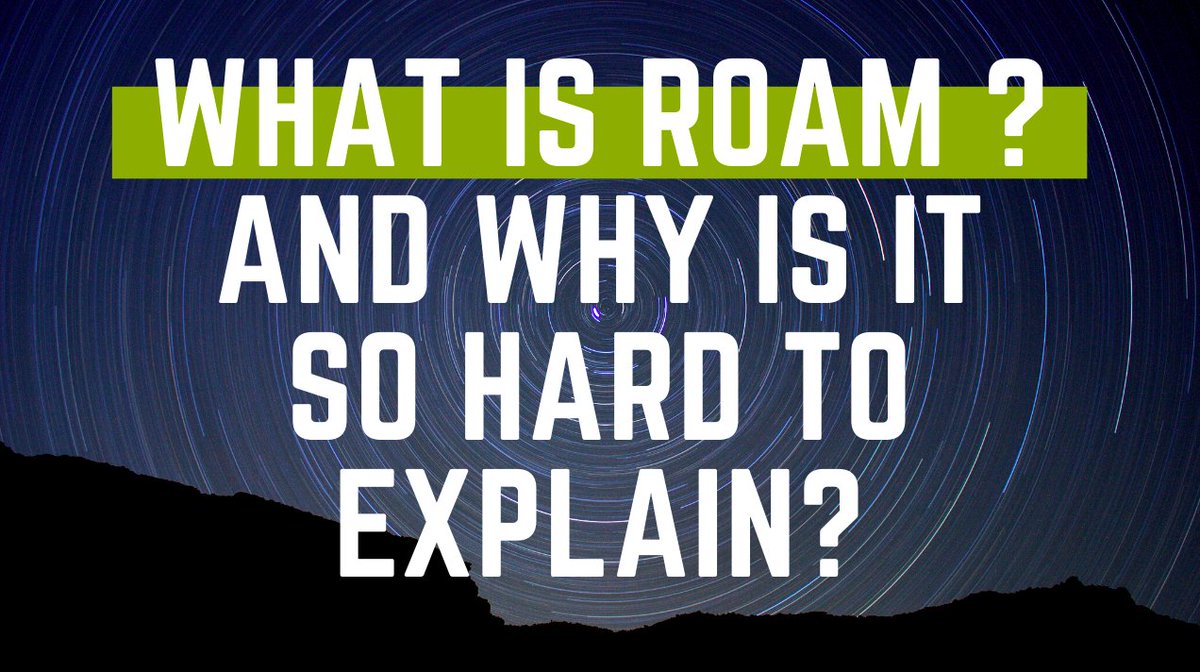
1/ #RoamGames THE SECRET OF PROFESSIONAL PROJECT MANAGERS: ALGORITHMS OF THOUGHT DESIGNED FOR BRINGING IDEAS TO REALITY
Btw, hope to see you in a few hours for the Q&A:
Americas/Oceania: us02web.zoom.us/meeting/regist…
Asia/EMEA: us02web.zoom.us/meeting/regist…
Btw, hope to see you in a few hours for the Q&A:
Americas/Oceania: us02web.zoom.us/meeting/regist…
Asia/EMEA: us02web.zoom.us/meeting/regist…

2/ When I was a novice, I looked at project work as one big messy blob.
Professional project management gave me the following:
- A template for breaking down project work
- Algorithms of thought for each component of project work
Professional project management gave me the following:
- A template for breaking down project work
- Algorithms of thought for each component of project work
3/ I first heard of algorithms of thought from @cortexfutura
It's perfect for describing the tools I share in the book. They are processes designed—each in its unique way—to bring your project to reality.
cortexfutura.com/getting-starte…
It's perfect for describing the tools I share in the book. They are processes designed—each in its unique way—to bring your project to reality.
cortexfutura.com/getting-starte…
4/ 2 examples: The Work Breakdown Structure & the Risk Register
Creating a WBS helps you imagine the work needed to accomplish the project. With this, you can immediately get a feel of the skills you need, the cost, the time it will take, and the risks.
Creating a WBS helps you imagine the work needed to accomplish the project. With this, you can immediately get a feel of the skills you need, the cost, the time it will take, and the risks.
https://twitter.com/kcorazo/status/1266227633391452162
5/ The Risk Register helps you program your attention in proportion to the magnitude of your risks. It also guides you in planning mitigation & contingency.
I did a video on how I did this with Roam. I won't be as prescriptive in the book as I was here. loom.com/share/43d87b4b…
I did a video on how I did this with Roam. I won't be as prescriptive in the book as I was here. loom.com/share/43d87b4b…
6/ The other PM tools are from PMBOK, the most mature collection of project management practices.
It has one blindspot though. PMs are usually hired guns, paid to bring other people's ideas to reality. The tools have a bias of [[playing not to lose]] rather than maxing upside.
It has one blindspot though. PMs are usually hired guns, paid to bring other people's ideas to reality. The tools have a bias of [[playing not to lose]] rather than maxing upside.

7/ If you are bringing your own ideas to reality, you'd want to also systematically maximize your upside, and be open to unexpected good fortune.
I haven't seen anyone in the PM world talk about this, but this has been key to accessiblegenomics.org
I haven't seen anyone in the PM world talk about this, but this has been key to accessiblegenomics.org
https://twitter.com/Roamfu/status/1343567197080154114
8/8 Sign-up here to get email updates and medium rare book chapters: bit.ly/roamfu-pm
• • •
Missing some Tweet in this thread? You can try to
force a refresh







